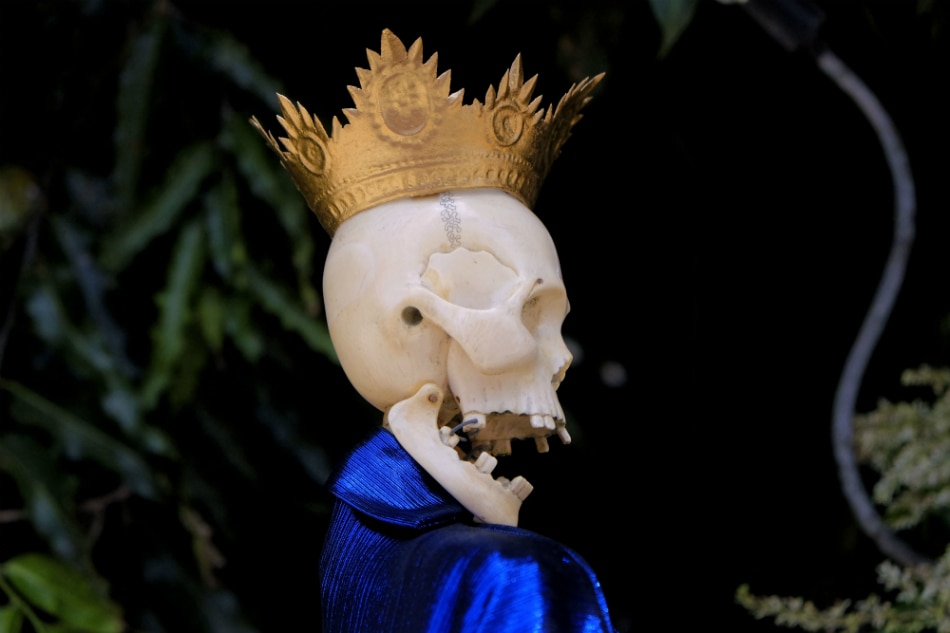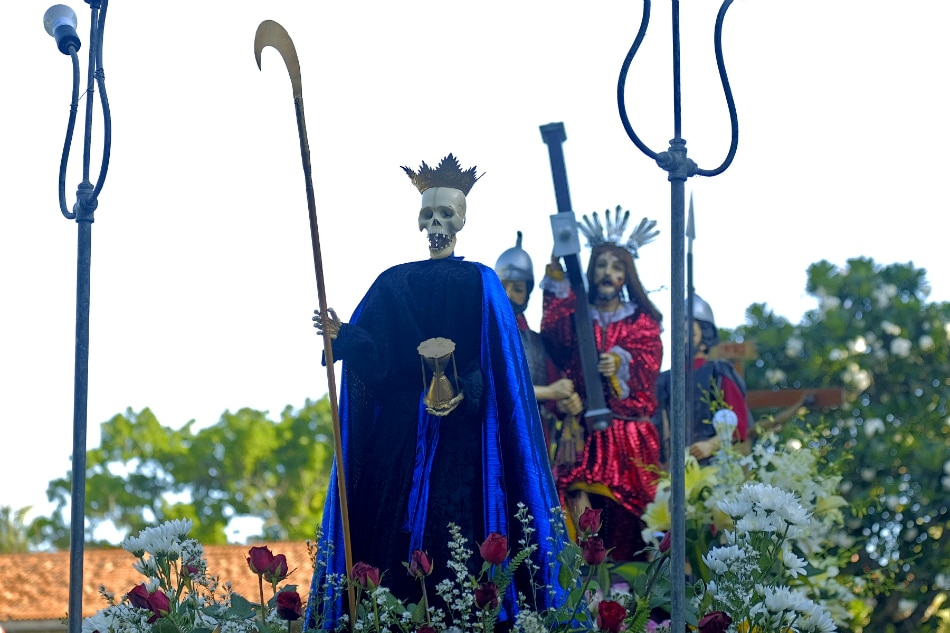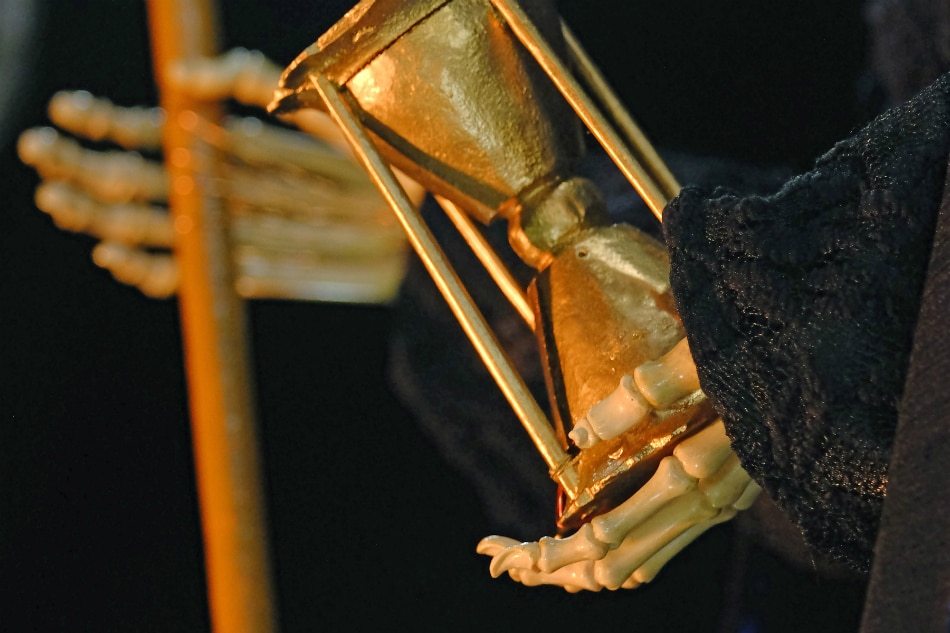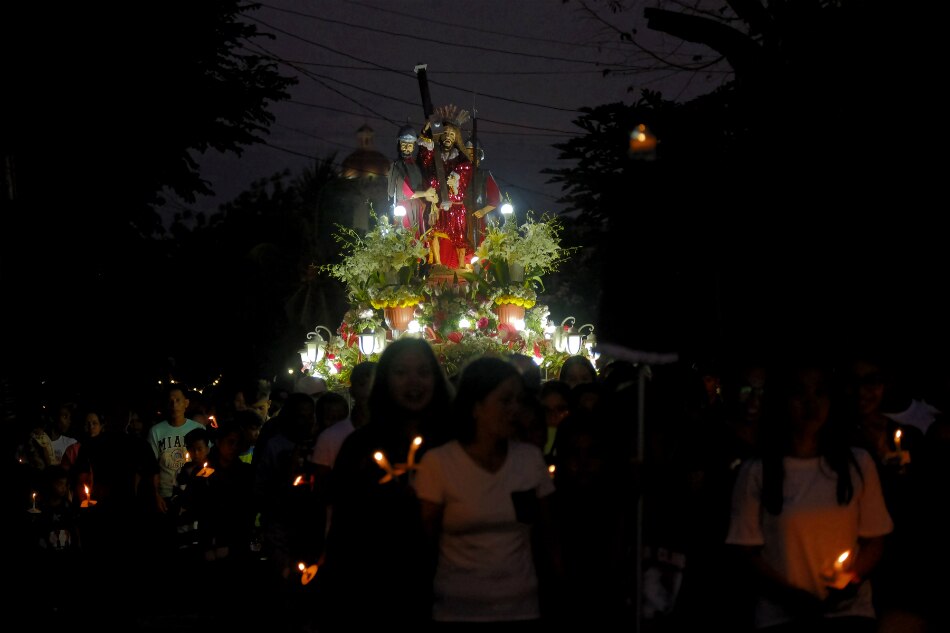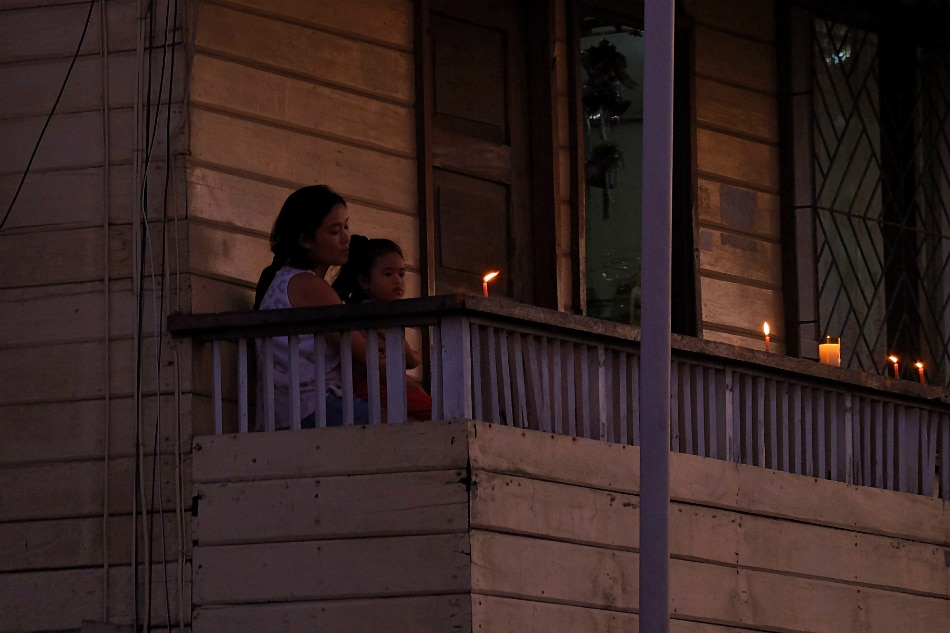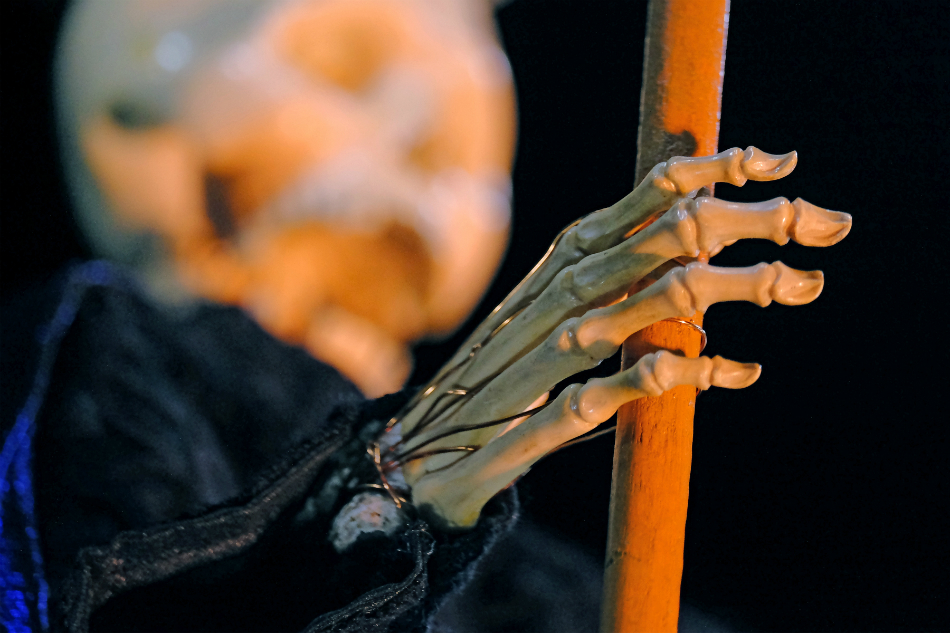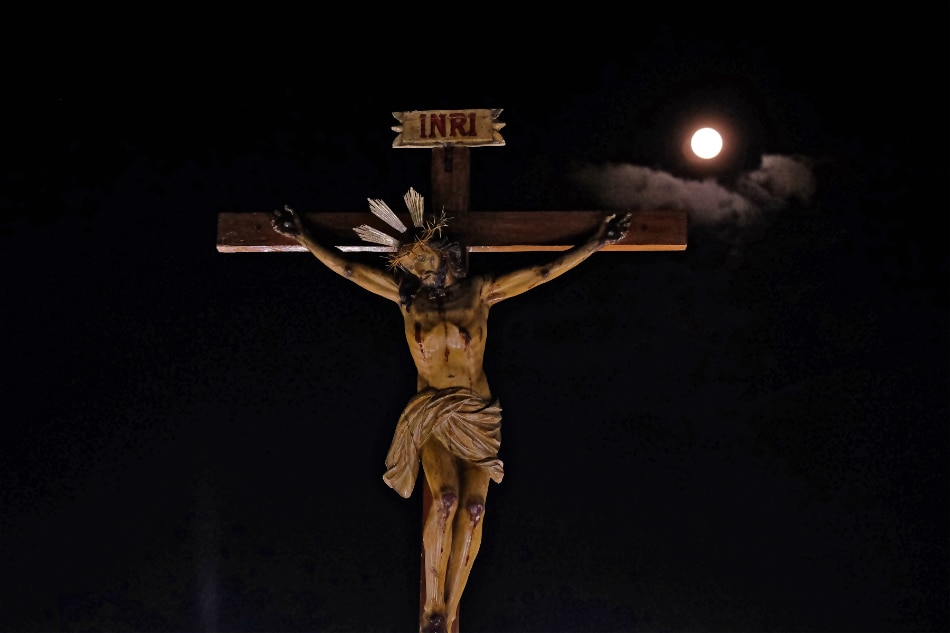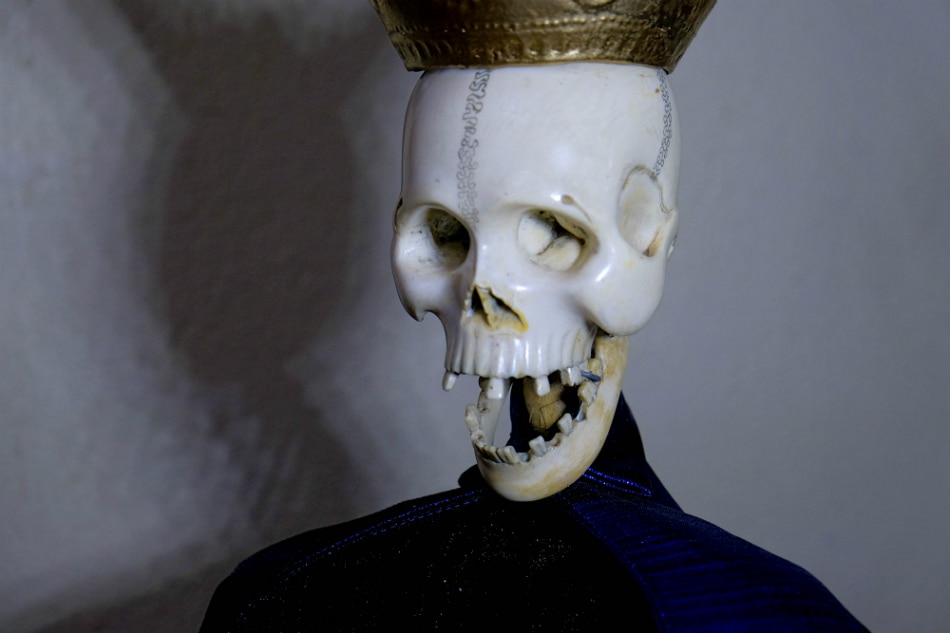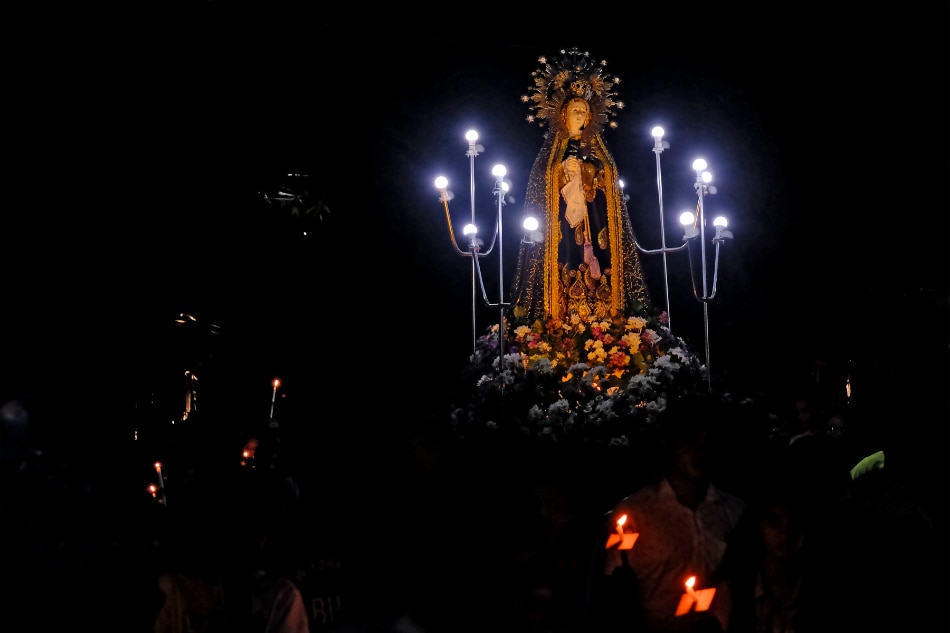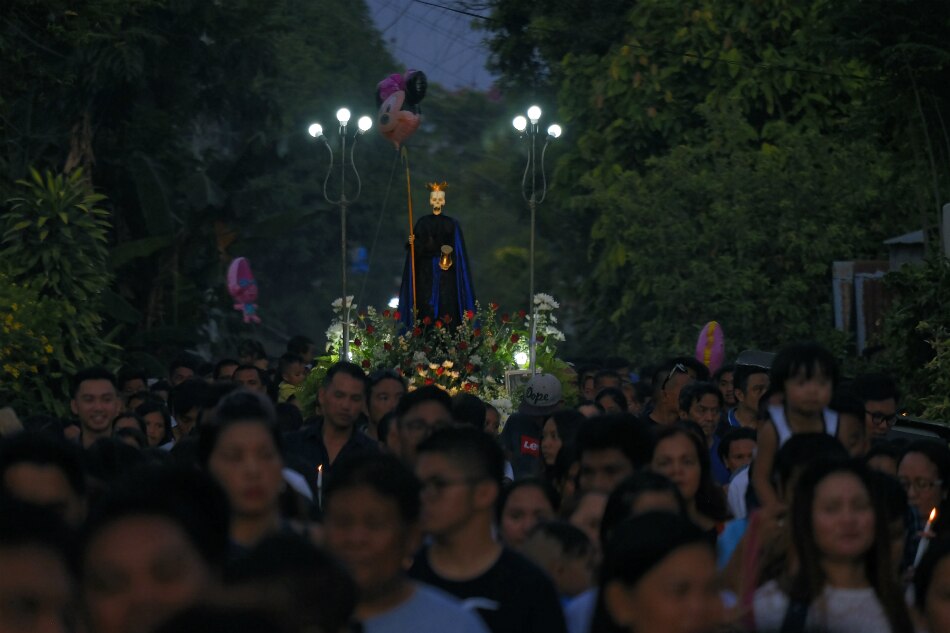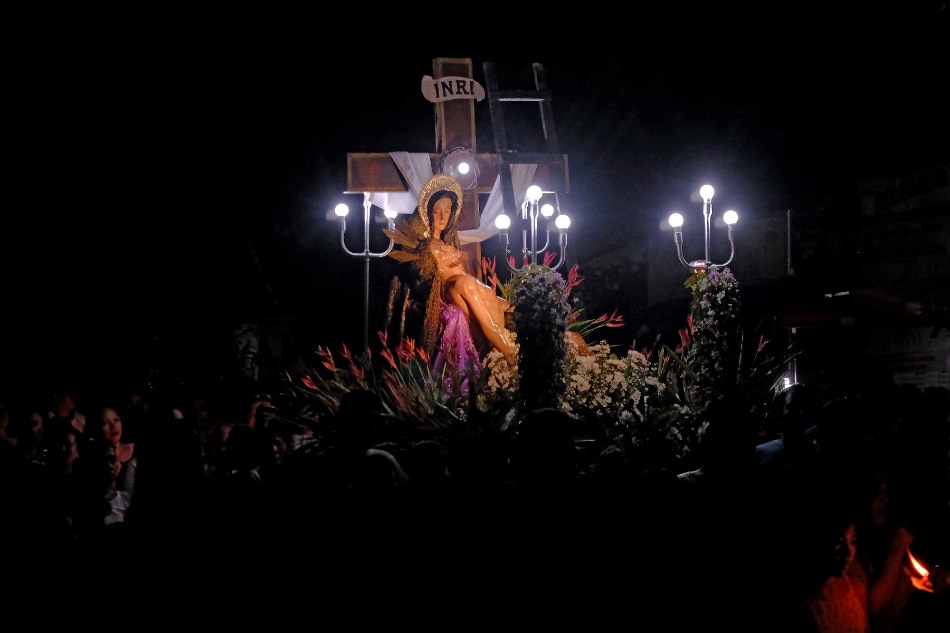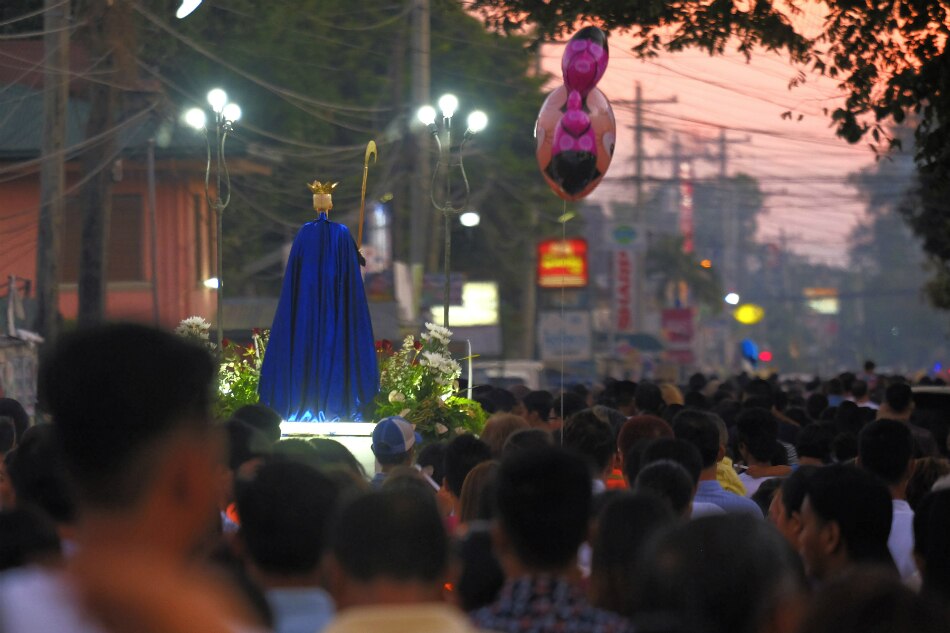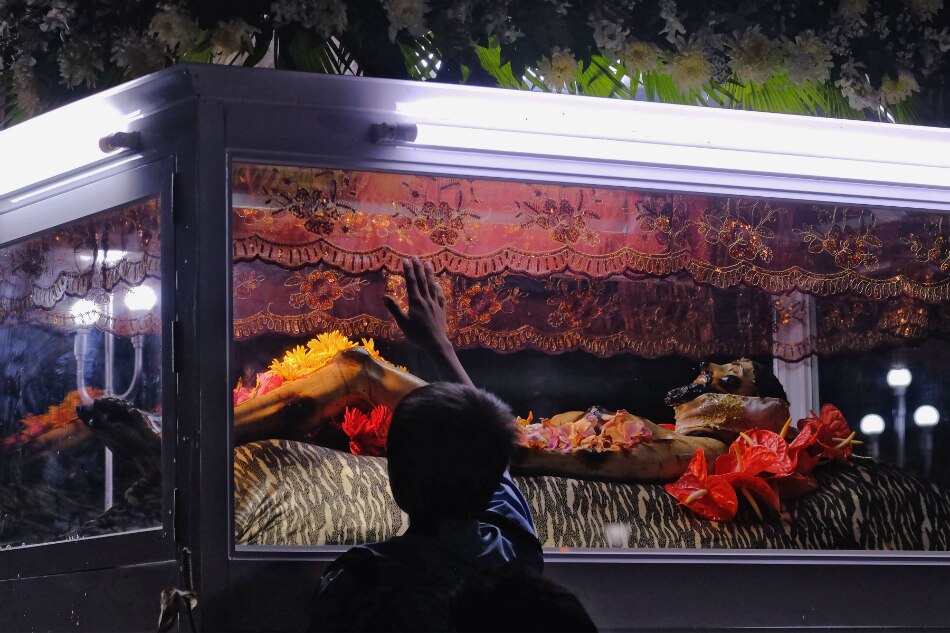LOOK: La Santa Muerte leads Holy Week procession in Cebu | ABS-CBN
ADVERTISEMENT

Welcome, Kapamilya! We use cookies to improve your browsing experience. Continuing to use this site means you agree to our use of cookies. Tell me more!
LOOK: La Santa Muerte leads Holy Week procession in Cebu
LOOK: La Santa Muerte leads Holy Week procession in Cebu
Victor Kintanar
Published Apr 22, 2019 12:21 AM PHT
ARGAO, Cebu -- Unlike most of the yearly pasos (steps) or Holy Week processions in parishes across the Philippines, the town of Argao in Cebu offers something different.
ARGAO, Cebu -- Unlike most of the yearly pasos (steps) or Holy Week processions in parishes across the Philippines, the town of Argao in Cebu offers something different.
Included in its traditional procession during Holy Week are icons that represent and commemorate the stages of the passion and death of Jesus Christ. On Holy Wednesday, 18 carrozas (carriages) joined the pasos, and only 14 on Good Friday.
Included in its traditional procession during Holy Week are icons that represent and commemorate the stages of the passion and death of Jesus Christ. On Holy Wednesday, 18 carrozas (carriages) joined the pasos, and only 14 on Good Friday.
On Good Friday, first in line was the icon of the La Santa Muerte. A skeleton dressed in black cassock with a blue cape stands on top of a carozza decorated with flowers, candles and electric light bulbs.
On Good Friday, first in line was the icon of the La Santa Muerte. A skeleton dressed in black cassock with a blue cape stands on top of a carozza decorated with flowers, candles and electric light bulbs.
Most of these icons in the pasos are heirlooms passed by clan generations to the next. Gwendolyn Aguilar Montañez, 54, recalled that the La Santa Muerte had been passed throughout the Aguilar family in Argao. Since 2008 when his father died, she has been designated to prepare the icon every Holy Week.
Most of these icons in the pasos are heirlooms passed by clan generations to the next. Gwendolyn Aguilar Montañez, 54, recalled that the La Santa Muerte had been passed throughout the Aguilar family in Argao. Since 2008 when his father died, she has been designated to prepare the icon every Holy Week.
ADVERTISEMENT
According to her grandfather, the icon came from Spain and that there are two of this, with the other one in Panay island.
According to her grandfather, the icon came from Spain and that there are two of this, with the other one in Panay island.
Years ago people came to their place and introduced themselves as “from the church.” They attempted to get the icon by telling them that it was borrowed form a church in Bohol Island and that they are going to get it back. The “poseurs” were unsuccessful as they directly refused their claim. This was no surprise for the Aguilars as the icon’s skull and hands are made of ivory.
Years ago people came to their place and introduced themselves as “from the church.” They attempted to get the icon by telling them that it was borrowed form a church in Bohol Island and that they are going to get it back. The “poseurs” were unsuccessful as they directly refused their claim. This was no surprise for the Aguilars as the icon’s skull and hands are made of ivory.
Because of this, every week after the procession, the icon is disassembled. Its parts will be kept by clan members in different locations to keep it safe for next year’s celebration.
Because of this, every week after the procession, the icon is disassembled. Its parts will be kept by clan members in different locations to keep it safe for next year’s celebration.
Nelson Montañez, 52, travels from faraway Lapu-Lapu City in Mactan Island, Cebu, every Holy Week to decorate the carozza of the La Santa Muerte ever since his sister-in-law Gwendolyn took the responsibility as caretaker of the icon.
Nelson Montañez, 52, travels from faraway Lapu-Lapu City in Mactan Island, Cebu, every Holy Week to decorate the carozza of the La Santa Muerte ever since his sister-in-law Gwendolyn took the responsibility as caretaker of the icon.
With his skills in flower arrangement, it has been a “panaad" (vow) for him every Good Friday to prepare it for the annual procession.
With his skills in flower arrangement, it has been a “panaad" (vow) for him every Good Friday to prepare it for the annual procession.
ADVERTISEMENT
Berto Rubia 76, who also served as decorator of the La Santa Muetre, said in his 40 years of preparing the icon every Good Friday, he realized that “the best way of life, is doing good. For we will all die and meet our maker.”
Berto Rubia 76, who also served as decorator of the La Santa Muetre, said in his 40 years of preparing the icon every Good Friday, he realized that “the best way of life, is doing good. For we will all die and meet our maker.”
Rev. Msgr. Camilo P. Alia of the Archdiocesan Shrine and Parish of San Miguel Arcangel in Argao emphasized that the diocese of Argao never encouraged the parishioners to have a devotion to her.
Rev. Msgr. Camilo P. Alia of the Archdiocesan Shrine and Parish of San Miguel Arcangel in Argao emphasized that the diocese of Argao never encouraged the parishioners to have a devotion to her.
“We do not venerate her, she is only part of the pasos. Not like in Mexico where in they treat her like a saint. She serves as a reminder to us that our lives have limits and that death is the door to the next life. The La Santa Muetre reminds us of death. That Christ died so that we may live and when we die we will be resurrected in Him,” he said.
“We do not venerate her, she is only part of the pasos. Not like in Mexico where in they treat her like a saint. She serves as a reminder to us that our lives have limits and that death is the door to the next life. The La Santa Muetre reminds us of death. That Christ died so that we may live and when we die we will be resurrected in Him,” he said.
ADVERTISEMENT
ADVERTISEMENT



